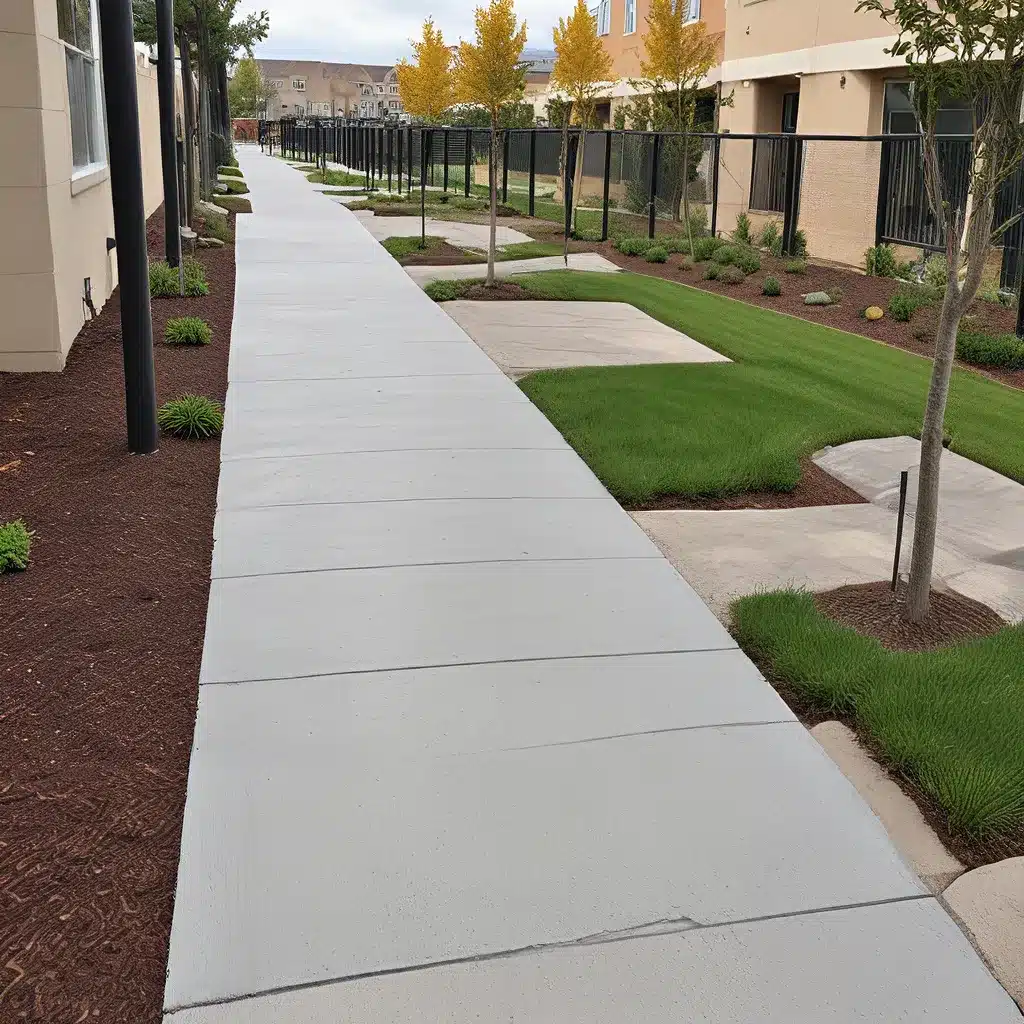
Concrete walkways are an integral part of any outdoor space, providing safe and reliable access for pedestrians. Whether you’re a homeowner looking to enhance your property’s curb appeal or a business owner seeking to create an inviting entryway, the design and construction of concrete walkways can make a significant impact. In this comprehensive article, we’ll explore the key considerations for designing safe and visually appealing concrete walkways, drawing insights from industry experts and best practices.
Understanding Sidewalk Design Principles
The fundamental purpose of a concrete walkway is to facilitate pedestrian movement safely and comfortably. To achieve this, sidewalk design must adhere to a set of established principles and guidelines. The Federal Highway Administration (FHWA) and local transportation authorities, such as the Hawaii Department of Transportation, have developed comprehensive standards and recommendations to ensure the accessibility, safety, and aesthetics of pedestrian infrastructure.
One of the key principles is the division of the sidewalk into distinct zones, as outlined by the Seattle Department of Transportation (SDOT). These zones include the Frontage Zone, the Pedestrian Clear Zone, and the Landscape/Furniture Zone. By allocating specific areas for different functions, designers can create a well-organized and efficient walkway system.
The Frontage Zone is the area closest to the property line, which can accommodate elements such as sidewalk cafes, retail displays, or landscaping. The Pedestrian Clear Zone is the dedicated space for pedestrian movement, which must meet minimum width requirements to ensure accessibility. The Landscape/Furniture Zone serves as a buffer between the walkway and the roadway, providing space for street trees, street furniture, and other amenities.
Ensuring Accessibility and Safety
Safety is paramount when designing concrete walkways, and accessibility is a critical consideration. The Americans with Disabilities Act (ADA) sets forth specific guidelines for the construction of pedestrian facilities, including requirements for surface material, minimum clear width, and the installation of detectable warning surfaces at curb ramps.
Proper surface material selection is crucial for creating a durable, slip-resistant, and level walking surface. While standard concrete is a common choice, alternative materials like pervious concrete or pavers may also be considered, depending on local regulations and design requirements.
The minimum clear width for the Pedestrian Clear Zone is typically 4 feet, with 5 feet or more being the recommended standard. This ensures that wheelchair users, pedestrians with strollers, and others can comfortably navigate the walkway. In areas with high pedestrian traffic, such as near transit stops or in pedestrian-designated zones, wider clear zones may be required.
Detectable warning surfaces, such as truncated domes, are essential for guiding individuals with visual impairments and alerting them to the presence of curb ramps or crossings. These tactile surfaces must be installed in accordance with ADA standards to ensure consistent and effective signaling.
Enhancing Visual Appeal
While functionality is the primary concern, the visual appeal of concrete walkways can also have a significant impact on the overall aesthetic of a property or commercial space. Thoughtful design can transform a utilitarian walkway into a visually striking and inviting feature.
One approach to enhancing visual appeal is the incorporation of decorative concrete finishes. This can include stamped patterns, integrally colored concrete, or the use of exposed aggregate. These techniques add texture, depth, and visual interest to the walkway, complementing the surrounding architecture and landscaping.
Integrating landscape elements, such as street trees, planters, or decorative lighting, can also contribute to the visual appeal of concrete walkways. These elements not only enhance the aesthetic but also provide functional benefits, such as shade, stormwater management, and improved pedestrian-scale lighting.
Addressing Maintenance and Longevity
Concrete walkways are a significant investment, and property owners or business owners should consider the long-term maintenance and longevity of these structures. Proper installation, regular inspections, and timely repair or replacement of any cracks, unevenness, or damage can extend the lifespan of a concrete walkway and ensure its continued safe and appealing appearance.
The local concrete contractors in Kansas City can provide valuable guidance on the maintenance requirements and best practices for concrete walkways, tailored to the unique climate and conditions of the region. By partnering with experienced professionals, property owners and business owners can ensure that their concrete walkways remain safe, visually appealing, and functioning at their best for years to come.
Conclusion
Concrete walkways play a crucial role in creating a safe, accessible, and visually appealing outdoor environment. By understanding the design principles, prioritizing accessibility and safety, and enhancing the visual appeal, property owners and business owners in Kansas City can transform their concrete walkways into an asset that enhances the overall user experience and contributes to the curb appeal of their properties.
Whether you’re planning a new concrete walkway or looking to renovate an existing one, it’s important to work with experienced concrete contractors who can guide you through the process and ensure that your project meets or exceeds all relevant standards and regulations. By investing in high-quality concrete walkways, you can create a welcoming and functional space that supports the needs of the community and brings out the best in your property.

